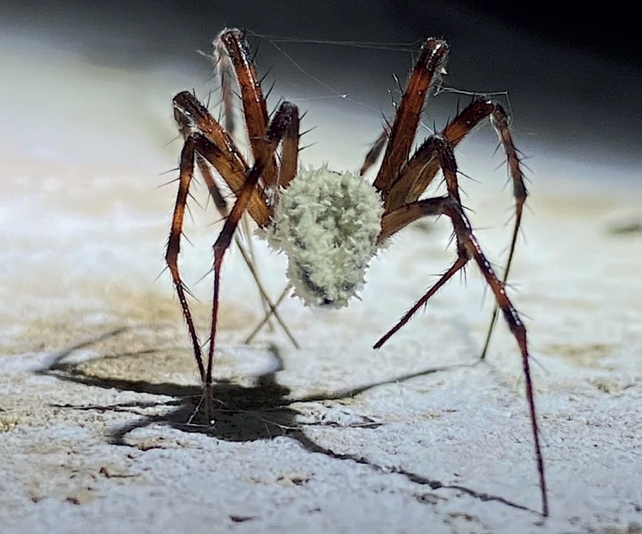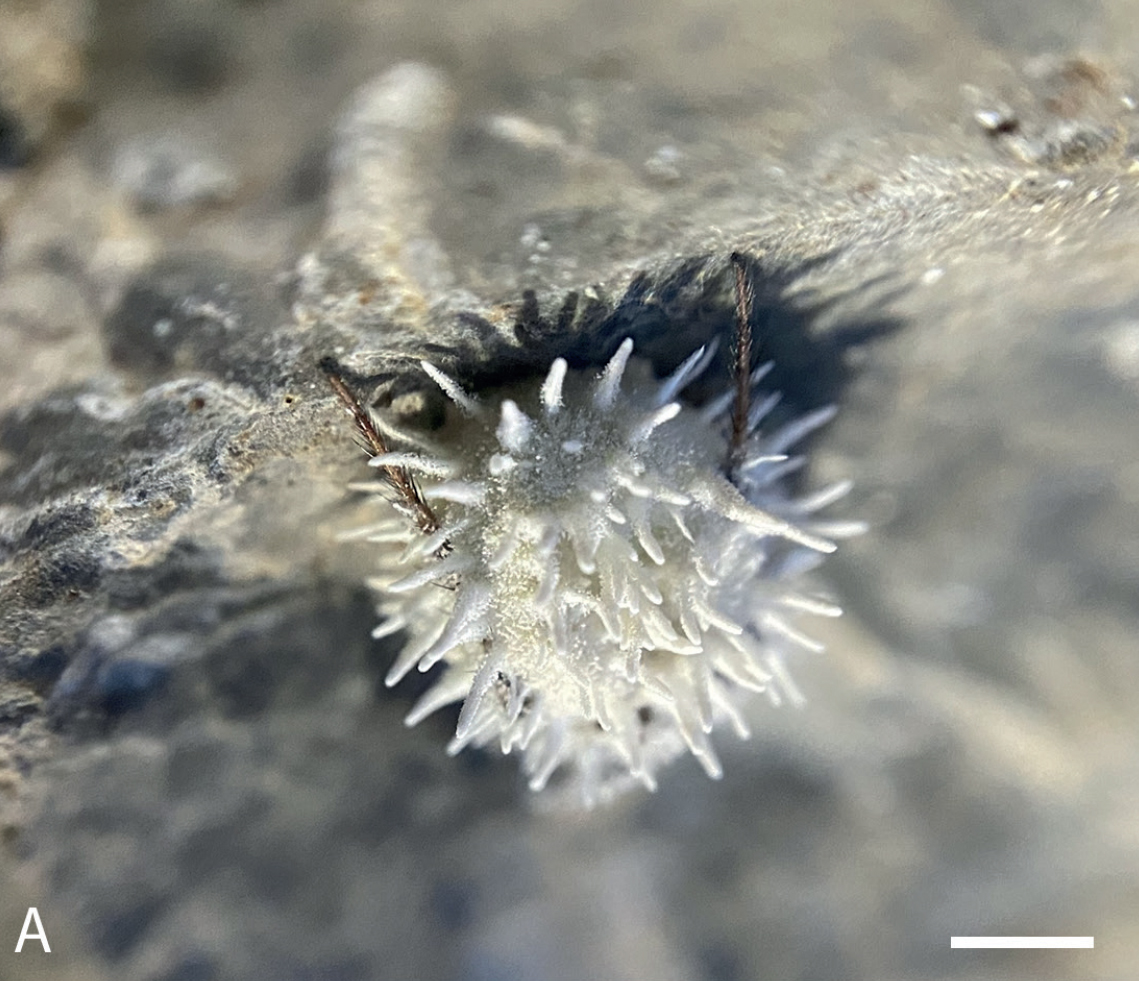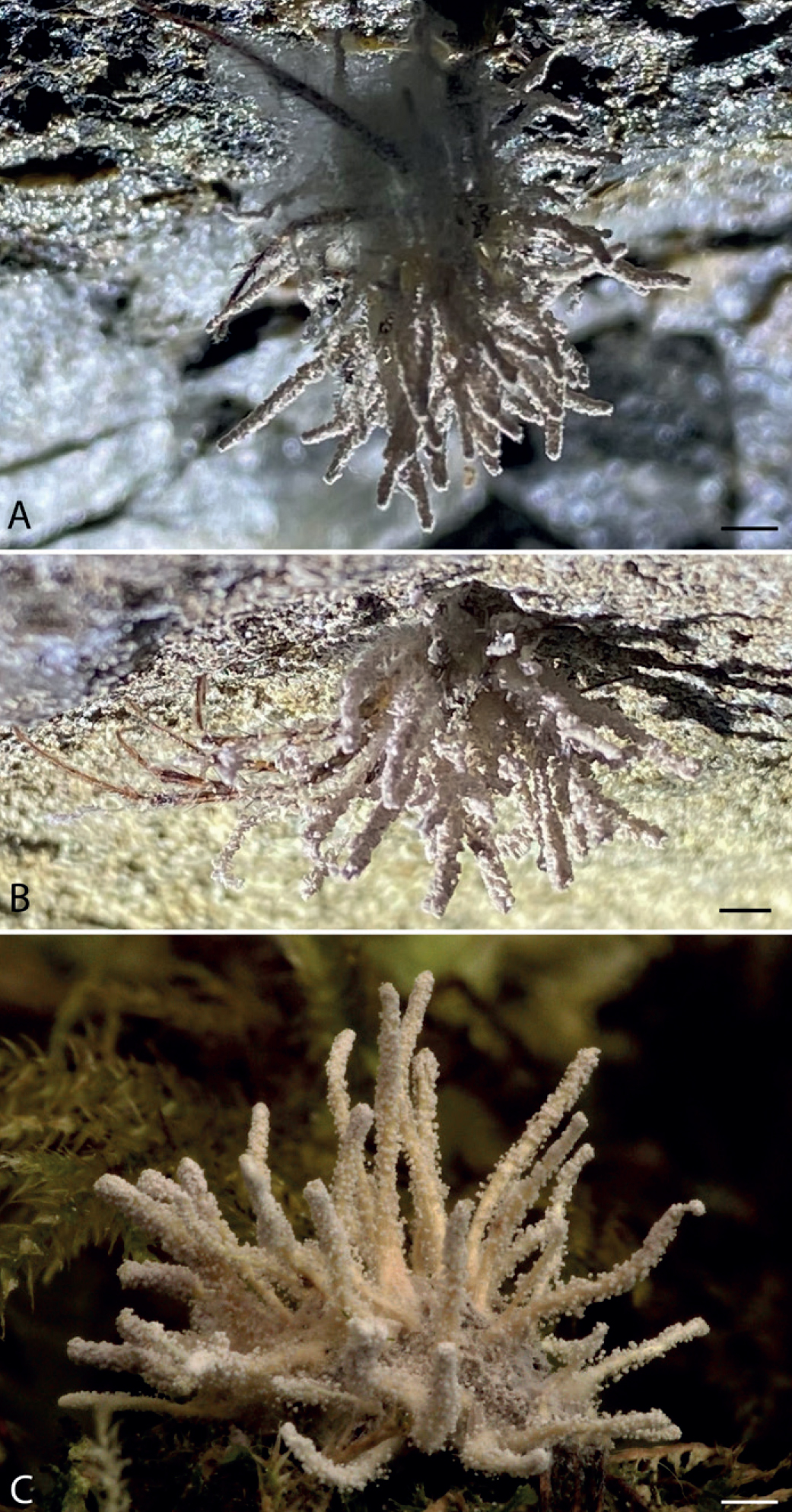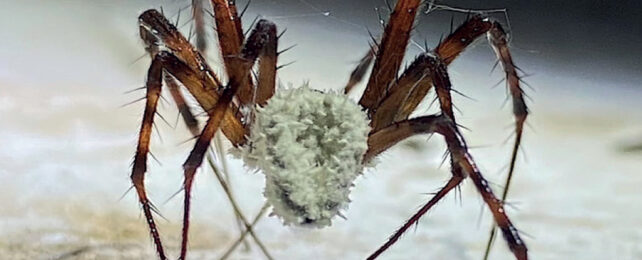A new species of fungus straight out of a nightmare has been found lurking on the ceiling of an abandoned gunpowder storeroom in Northern Ireland, enmeshed in the body of an unlucky spider host.
Beneath a crown of coralline protrusions, the disfigured carcass of a usually reclusive orb-weaving cave spider Metellina merianae was barely recognizable when a BBC documentary crew first encountered it while filming the series Winterwatch.
The gnarly specimen was sent to a team led by mycologist Harry Evans from the Centre for Agriculture and Bioscience International. With extra specimens collected from caves across the Irish isle, the team have identified the fungus as a new species they've named Gibellula attenboroughii after Sir David.

In each specimen, the fungi was enmeshed with a carcass of either M. merianae or another orb-spider species host, the European cave spider Meta menardi. Both of these spiders are 'sit-and-wait predators', usually concealing themselves close to their webs. They don't linger out in the open, yet each unlucky spider appears to have been steered against its nature to the exposed surfaces of cave ceilings.
This is very similar to the behavior of ants infected by Ophiocordyceps fungi in the Brazilian Atlantic rainforest, a cerebral takeover in which dopamine seems to play a role.
"The fact that Gibellula-infected spiders are found in prominent positions on the roof or ceiling of their subterranean habitats indicates a behavioral change, possibly manipulated by the fungus," the authors write.
"The sporulating cadavers would be exposed to the air currents circulating through the caves promoting the release and subsequent dispersal of the dry spores through the system."

While genetic analysis shows the cave and gunpowder room specimens are all one species of fungi, you wouldn't know from looking. Evans' team suspects the variety of forms this species takes could be a result of the different environmental conditions where it grows.
In the underground gunpowder store, for instance, the complete absence of air movement may explain why the spores adhered in column-like forms to the fungal surface, and without light, underwent a loss of pigment.

"Within the cave system, especially in the threshold zone favored by Metellina merianae, there would be both diffuse light and air currents to dislodge and disperse the [spores] resulting in a decreased incidence of long chains or blocks of spores," the team writes.
The discovery has also led scientists to suspect the same fungus might be behind infected M. merianae specimens in Wales, which live in the entrances of rock fissures or similar man-made niches around a lakeside locality where there are no caves. There, they seem to have moved from these safe crevasses to the surrounding or overhanging sphagnum moss, perhaps puppeteered by the fungus.
Delving into herbarium and literature archives, the team found illustrations and other records of similar fungi that may in fact be Gibellula.
"There is a hidden diversity in the British Isles and that many more species of Gibellula remain to be discovered," they note.
The research is published in Fungal Systematics and Evolution.
